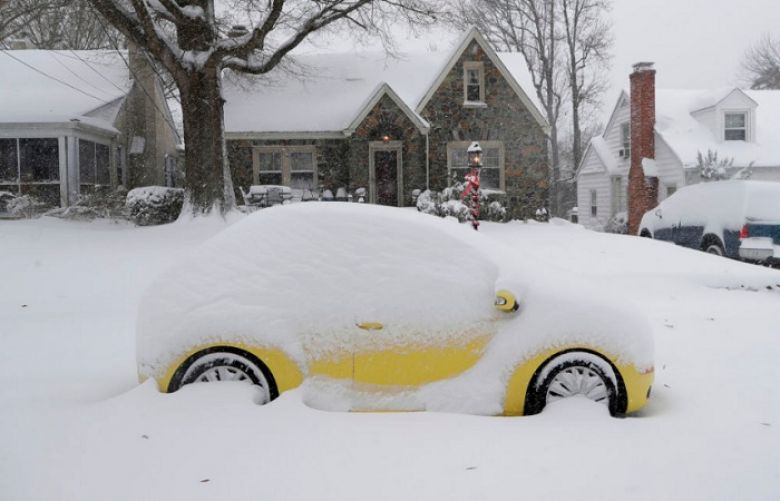While the next storm on the way for the eastern United States will be warmer when compared to last weekend's storm, it may create trouble in the South in the form of flooding as rain and thunderstorms beginning late this week.
Wet stretch ahead for southeastern US
In areas where there is little or no snow on the ground, the saturated state of the soil and a general 1-3 inches of rain forecast can be enough to cause urban and small stream flooding and lead to rises on some of the major rivers in the region.
Rain from last weekend's storm has already forced some of the rivers in the Carolinas and Georgia out of their banks.
The Lumber River at Lumberton, North Carolina, which was hit hard by flooding Florence late this past summer, is forecast to reach major flood stage this weekend.
Expect travel delays to expand as the rain wets the roads, areas of fog develop and the cloud ceiling lowers around the airports, including Atlanta, Charlotte, North Carolina, and Orlando, Florida.
Flash flooding and severe thunderstorms may occur
Heavy to locally severe thunderstorms are likely over Florida and may extend northward along the southern Atlantic coast from Friday to early Saturday.
"The greatest threats from the storms are expected to be flooding downpours and strong wind gusts," according to AccuWeather Lead Storm Warning Meteorologist Eddie Walker.
"However, a few isolated tornadoes cannot be ruled out," Walker said.
Some of the heaviest rainfall from the storm may fall from Florida to the Carolina coast.
"It is in the southeastern corner of the U.S., especially in parts of Florida, where downpours may train and lead to flooding on a more regional basis," according to AccuWeather Meteorologist Maggie Samuhel.
Lingering snow to be a problem
Snow has been melting and will continue to disappear in some areas in the wake of last weekend's heavy snowfall. However, enough will remain on the ground over the southern Appalachians and in many Piedmont areas as rain from the next storm arrives on Friday.
At the very least, where snow is piled up and is blocking storm drains, urban flooding is likely.
The time to clear the snow from storm drains along streets and in parking lots is prior to the next storm's arrival.
In some cases where the snow partially melted and turned to ice, it may take a long time for this wintry concoction to go away. Ice ruts on driveways and back roads may remain through the storm over the countryside in the mountains.
Where heavy snow remains on roofs, especially flat or shallow pitched roofs, there is the risk of collapse. Enough rain may fall at first to add a great deal of weight to the roof, since the snow may act like a sponge.
For example, one gallon of water weighs about 10 pounds. So, in some cases, there may be parts of the roof that have imaginary gallon jugs stacked 2 to 4 layers deep where snow has drifted. Often, it is the uneven snow load on a shallow roof that leads to failure as rain pours down.
Only remove snow from a roof if you can do so safely, such as using a roof brush or contact a professional that is properly insured.







